Matador Network's Blog, page 925
February 7, 2020
Best Madrid neighborhood for food
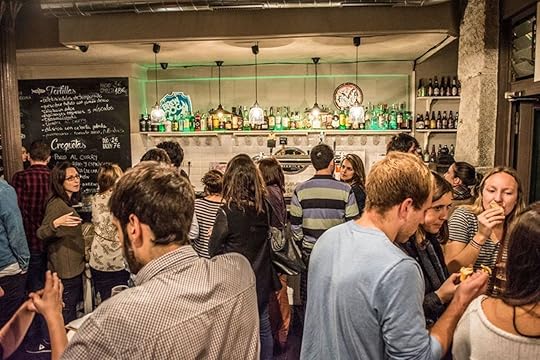
Malasaña is to Madrid what Williamsburg was to Brooklyn in the early 2000s. The neighborhood gets its name from a young heroine, Manuela Malasaña, who died fighting against French occupation in the early 1800s. Fast forward to the 1980s, when Malasaña became the epicenter of a countercultural movement that saw young and rebellious Madrileňos embracing punk and free speech — both taboos under the Franco dictatorship.
Along with a reputation for breaking cultural norms, this colorful neighborhood is known for its eclectic food scene. Malasaña is the place to go if you want to taste a wide spectrum of Spanish cuisine, from traditional tapas to fusion creations. In fact, there’s a fair case to be made that Malasaña is Madrid’s best neighborhood for people who travel to eat.
Malasaña’s tapas bars are on a different level

Photo: Pez Tortilla/Facebook
Many recommendations for tapas bars in Madrid will point you to the center of the city around the neighborhoods of Sol, Gran Via, and Plaza Mayor. The reality is that there are a lot of run-of-the-mill, touristy restaurants in the heart of Madrid. Sure, you can find great tapas bars there, and all around Madrid, but Malasaña is home to tapas bars that put the rest to shame.
Where to eat tapas: Casa Julio is arguably the best tapas bar in Madrid. A trip to Madrid isn’t complete without a visit to this small establishment on Calle de la Madera. The specialty is gourmet croquetas, which come in a variety of flavors, including blue cheese and mushroom with leeks. There’s also the traditional jamón (ham) if you’d rather play it safe. You can sample all seven signature croquetas for less than 10 euros.
Just down the street from Casa Julio, you’ll find Bodega de la Ardosa, an old-fashioned tapas bar where you can try house specialties like palitos de berenjena (eggplant sticks coated in tempura). Pez Tortilla is the place to go for a gourmet tortilla de patata (Spanish omelet) that’s wonderfully cooked and packed with flavor.
You can try regional cuisines from all over Spain

Photo: Orio Fuencarral/Facebook
If you’re looking for Galician octopus or Basque cod but don’t plan on leaving Madrid, in Malasaña you’ll have a chance to try Spanish specialties straight from the abuelas (or at least close). While the neighborhood may be known for its experimental approach to food, you can still find classic restaurants that stay true to traditional Spanish cooking.
Where to eat: Indulge in Galician octopus, clams, and fresh fish at Los Montes de Galicia. You can also head to Ribeira do Miño for a seafood platter similar to the ones you’ll find in the capital of Galicia, Santiago de Compostela. After getting a taste of Galicia, head to Orio to try pintxos, the Basque version of tapas, and the staple Basque fish, bacalao (cod).
Malasaña’s best quirky coffee shops

Photo: JJFarq/Shutterstock
Malasaña may well be the coffee shop capital of Spain. Here, you’ll find a high concentration of coffee shops for students and millennials to work and socialize. In keeping with the alternative culture, it seems that the coffee shops are almost required to be weird. But beyond the quirkiness, these establishments serve delicious drinks and teas.
Where to drink (and eat): The sheer number of coffee shops in Malasaña makes it difficult to narrow down a few. The great thing is that most are within walking distance of each other. First, there’s La Bicicleta, which has an interior decorated with bikes. This hotspot is a coffee shop by day and a bar by night. Order a good ole café con leche with a bagel. Misión Café is great for its sandwiches and teas. Another favorite is La Colectiva Café, which has vegan and vegetarian options like tofu scramble, as well as the Spanish staple tostada con tomate (toast with tomato sauce).
Where to experience Malasaña’s lively bar scene

Photo: La Bicicleta Café/Facebook
Malasaña comes alive at night when the young residents pour out into the narrow streets to go bar hopping. The area around Plaza de San Ildefonso tends to get the most traffic. Botellón, or drinking in the street before heading a bar or club, used to be a popular activity until it was officially banned in 2016. Still, the ban hasn’t stopped street vendors from selling beer to passersby.
In Malasaña, you’ll find a wide variety of bars that serve cheap beers and cocktails. But don’t worry, you won’t be fighting for space with drunk study abroad students. Thirty- and forty-somethings like to spend time in Malasaña, too.
Where to drink: Head back to La Bicicleta at night for some amazing mojitos and fruity cocktails. Bar Cabreira, just a stone’s throw away, is usually packed with locals. This hotspot is a great place to sip Galician wines and local beers. End the night at Ojalá, a tropical-themed bar and restaurant with sand on the floor. It’s this sort of detail that makes Malasaña truly different and memorable. 
Best ruins to see in Delhi, India
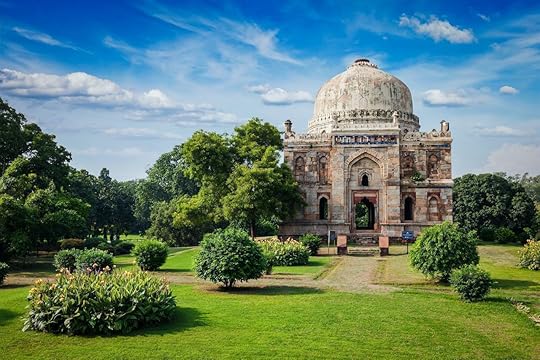
Throughout history, dynasties, kings, and colonizers have staked their claim on Delhi, each leaving their mark. Unfortunately, most visitors to Delhi see just a very small slice of the many beautiful layers of the city’s heritage, ticking off the Red Fort, Jama Masjid, India Gate, and leaving dozens of other fascinating structures unexplored. From the grand tombs of Mughal rulers to the mosques and forts of New Delhi, here are eight spots travelers with an interest in history and architecture should check out for a well-rounded history lesson.
1. Humayun’s Tomb

Photo: Anartist/Shutterstock
The 16th-century tomb of Mughal emperor Humayun is made of red sandstone, has a white dome, and is surrounded by well-tended formal Persian-style gardens. It’s an architectural precursor to the much more famous Taj Mahal in Agra, and the similarities are clear.
Humayun’s Tomb is a UNESCO World Heritage site and has undergone extensive restoration since the late 1990s, the progression of which you can learn about on information boards posted on site. There are also a number of other, smaller tombs in the same complex, so plan on spending at least an hour ambling through the gardens in order to not miss anything.
Getting there: Humayun’s Tomb is not very close to any metro stations, but the Hazrat Nizamuddin and Jawaharlal Nehru Stadium stations are closest. From there, you’ll need to hail an autorickshaw, generally called an auto, which shouldn’t cost more than 200 Indian rupees (under $3). Carry cash to pay.
2. Khan-i-Khanan Tomb
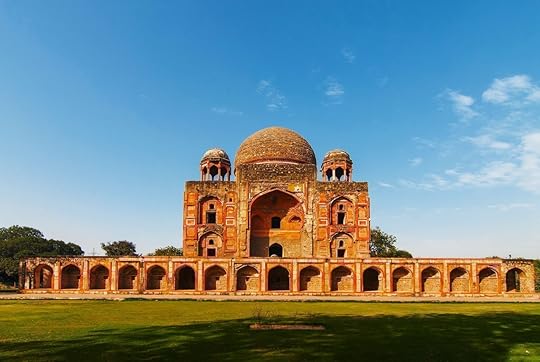
Photo: OleksiyGS/Shutterstock
Khan-i-Khanan Tomb is not far from Humayun’s Tomb but has far fewer visitors. This tomb was built for the wife of Abdul Rahim Khan, a Mughal-era composer, in the 16th century and completed in the 17th century. His wife was buried there in 1598, and he himself was in 1627. It suffered partial destruction in the 18th and 19th centuries, and building materials and ornamentation were stripped for use on Safdarjung’s Tomb. In the last few years, however, this site has undergone a facelift, part of the Nizamuddin Urban Renewal Initiative that has pioneered a craft-based approach to restoration in India and has provided jobs for thousands of traditionally skilled artisans.
Getting there: Either take the metro to JLN Stadium and then take an auto (50 rupees, or less than $1) to Nizamuddin East, or tack a visit onto a trip to Humayun’s Tomb. It’s less than a mile from the main entrance of Humayun’s Tomb.
3. Hauz Khas Village
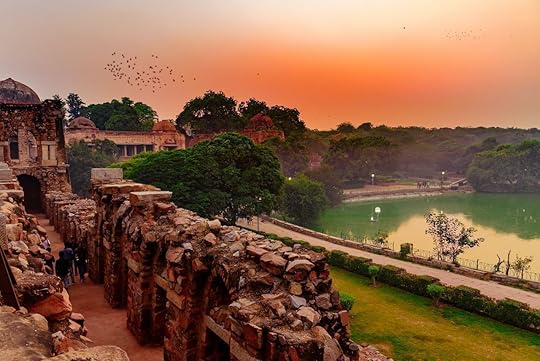
Photo: Amit kg/Shutterstock
Hauz Khas Village is a trendy shopping and dining area in southern Delhi, but besides the glitzy boutiques and fancy restaurants, which are worth a visit in themselves, are the Hauz Khas (royal water tank) and ruins of a mosque, Islamic seminary, and tombs. The lake was built in the 13th century as a water supply for nearby Siri Fort. The park and ruins are often full of smooching students hiding behind pillars and in the shade of archways. The ruins are quite extensive and offer good views across the lake.
Getting there: Hauz Khas Village is closest to the Green Park metro station, not the Hauz Khas metro station. From there you’ll need to take an auto, which shouldn’t cost more than 40 rupees (about $1.40).
4. Mehrauli Archaeological Park

Photo: Mukul Banerjee/Shutterstock
The famous 13th-century Qutab Minar pillar is located within the greater Mehrauli Archaeological Park area, but the park itself gets few tourists. It’s a sprawling area with a variety of ruins, as well as functioning mosques, both of which are worth checking out. Because of the large size of the area, it’s best to come here with a tour guide; otherwise, you risk missing the best bits or not really understanding what you’re seeing. Or just getting lost.
A highlight of the Mehrauli Archaeological Park is the Jamali Kamali Mosque and Tomb. It has colorful, detailed geometric star and flower patterns and tiles on the walls and ceilings. “Jamali” was the alias of 16th-century Sufi poet Shaikh Fazlu’llah. It’s not entirely clear who Kamali was, but it’s been suggested that the two men were lovers.
Getting there: Mehrauli is in the southwest of the city, about 11 miles from the city center. The metro stops Chhatarpur and Qutab Minar are the best for reaching Mehrauli.
5. Lodhi Gardens

Photo: Dmitry Rukhlenko/Shutterstock
The Lodhi Gardens are very popular with picnicking Indian families on the weekend, but surprisingly few tourists come here. The beautiful gardens are free to enter and contain some of the best-preserved and restored tombs in the city, being built for members of the Lodi dynasty that ruled parts of north India in the 15th and 16th centuries. There’s also an impressive three-domed mosque, and the large Bara Gumbad, believed to be a gateway to the mosque.
Getting there: The Lodhi Gardens are on Lodhi Road. The nearest metro is Khan Market or Jor Bagh, from either of which the gardens are a short walk or auto ride through the leafy avenues of New Delhi.
6. Tughlaqabad Fort

Photo: Ajay Bhaskar/Shutterstock
It’ll likely just be you and some stray goats and dogs at Tughlaqabad Fort, as this isn’t somewhere that most female travelers will feel comfortable going alone. The ruined 14th-century Tughlaqabad Fort is massive, stretching for nearly four miles, and lies on Delhi’s southern outskirts. The whole city of Delhi once lived inside it. There are good views north towards today’s Delhi from the fort. There aren’t any of the same beautiful details at Tughlaqabad as there are elsewhere, as this is the least well-preserved of the ruins listed here, but the grandeur and scale are very impressive.
Getting there: Tughlaqabad Fort is south of the city and best reached by car or taxi. Arrange for the driver to wait for you, as it could be tricky hailing a taxi for the return journey.
7. Purana Qila
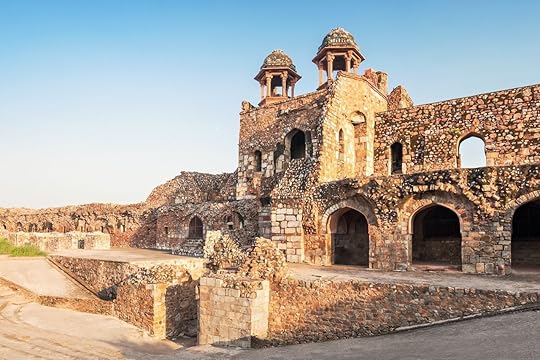
Photo: saiko3p/Shutterstock
Purana Qila means “old fort,” but despite its name, it isn’t the oldest of Delhi’s forts. It was constructed by Afghan ruler Sher Shah in the mid-16th century. It has a very impressive entrance gate. The large and peaceful grounds house several ancient monuments, including the beautifully detailed Qila-i-Kuhran Mosque. This is a great place to walk or relax with a book in the shade and watch the squirrels.
Getting there: Although centrally located within Delhi (to the east of India Gate) it’s quite far from any metro stations. It’s best to take an auto here.
8. Safdarjung’s Tomb

Photo: Waj/Shutterstock
Along the same lines as Humayun’s Tomb and the Taj Mahal, the mid-18th century Safdarjung’s Tomb has extravagant details. Safdarjung’s Tomb was the last monumental tomb garden built by the Mughals (the other prime example in Delhi is Humayun’s Tomb). Its architectural style reflects the fact that the heyday of Mughal tomb architecture had been and gone, and had entered a period of decadence. But it’s pretty nonetheless and a great place to visit before Humayun’s Tomb to get a sense of architectural continuity.
Getting there: The nearest metro station is Jor Bagh. Safdarjung’s Tomb is quite close to the Lodhi Gardens, so trips to both could be combined. 

More like this: How to explore the wild, awe-inspiring valleys of North India
The post 8 ruins to see in Delhi to dig deep into the city’s history appeared first on Matador Network.

Snow Moon February 2020

Between the harvest moon, wolf moon, blood moon, and the many other versions of the supermoon, it probably seems like there’s a special moon more often than a normal moon these days. But if you don’t have moon fatigue just yet, you may want to try to catch the Snow Moon hanging in the sky from this Friday night, February 7, to Monday morning, February 10.
The moon won’t be any whiter than usual, and won’t affect the weather. The name of this celestial event comes from Native American tribes that named it that way because this type of full moon was usually accompanied by heavy snow.
If you’re determined to catch the moon at its peak fullness, you’ll have to stand outside at 2:33 AM ET on Sunday, February 9. Note that the moon will look especially large during its rise and fall. 

More like this: 12 stargazing events you don’t want to miss in 2020
The post A Snow Moon will brighten up the sky this weekend appeared first on Matador Network.

Stanley Tucci Italy travel show

The actor Stanley Tucci has long had one foot in the food world and another in cinema. As well as star turns alongside Meryl Streep in movies like Julie and Julia and The Devil Wears Prada, the Golden Globe-winning actor was the co-owner of the now-closed Finch Tavern in upstate New York, and has written two cookbooks, The Tucci Cookbook, a collaboration with his family, in 2012, and its 2014 follow up, The Tucci Table. Now the actor is taking another step into the food world: CNN has recruited Tucci to host a four-episode tour of Italy.
Stanley Tucci: Searching for Italy will follow the actor around “very different regions” of Italy, according to Deadline, exploring the cuisine and culinary history of the country. So far, he’s slated to visit Florence, Rome, Sicily, and Milan.
Tucci’s obsession with Italy isn’t a secret. He has even directed and starred in a movie about a pair of Italian immigrants who open a restaurant in New Jersey — but that’s why he’s the perfect choice for this hosting gig. Amy Entelis, executive vice president for talent and content development for CNN Worldwide told Deadline that this show is the actor’s “love letter” to Italy.
Food fanatics and history buffs alike have long been flocking to Italy for fine dining and ancient ruins. We all know Italy has cornered the market on pasta, pizza, wine, and marble statues. There is no shortage of books, blogs, and Instagram accounts urging anyone with an appetite and a pair of walking shoes to visit Italy at least once. Tucci will have to take his show above and beyond the obvious to make a food tour of Italy feel fresh. It will be interesting to see what new perspectives on this well-trodden territory Tucci brings to the table. 

More like this: New Jersey’s Anthony Bourdain food trail is officially open
The post Actor Stanley Tucci to host food tour of Italy on CNN appeared first on Matador Network.

February 6, 2020
River cruise in Provence, France
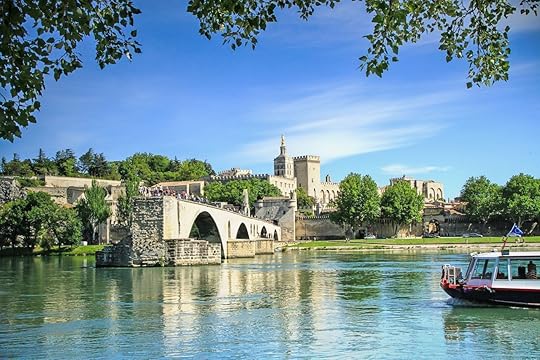
If you’ve long been curious to explore France’s storied southeastern region — from the lavender-filled fields of Provence to the hilly wine country near Lyon — consider doing so by boat. A Rhône river cruise gives you time to shop at bustling farmers markets, marvel at medieval palaces, and meander through vineyards while getting you to your next location by night. Rather than fretting about early check-outs, train schedules in French, or car travel down small winding roads, you can sleep in and wake up to find your boat docked right alongside the next cobblestoned town. Here’s what a Rhône cruise can look like — and how to make the most of it.
Choosing your river cruise operator
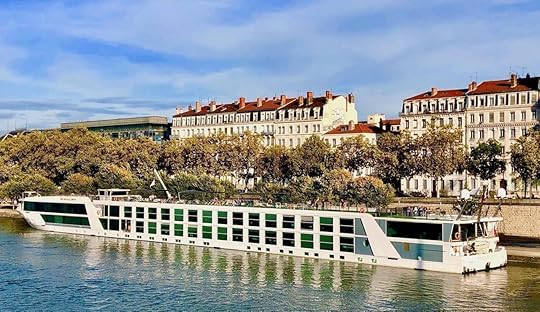
Photo: Elizabeth Hey
My husband and I chose an Emerald Waterways cruise, which took us over eight days from Arles in Provence north on the Rhône river to Lyon and finally to Salon-Sur-Soâne in Burgundy. We flew into and out of Nice and had transfers to and from the boat that are complementary on embarkation and disembarkation days. We opted for Emerald, which started offering its first cruises in 2014, because it looked like the best value for money.
Emerald Waterways has eight ships, which offer all-inclusive pricing covering all meals, on-board gratuities, and daily morning tours plus their gratuities. With a three-to-one ratio of guests to crew members, service is top-notch. It’s also the only river cruise line that comes with a heated pool under a retractable roof. Come evening, though, the floor rises through the pool’s surface and transforms the area into a movie theater serving complimentary popcorn.
Optional “DiscoverMore” tours offered at the ports of call cost extra, but you can easily launch out on your own instead. Onboard classes range from yoga on the pool deck to water aerobics and Pilates. Besides free WiFi, wine, beer, and, of course, soft drinks are also offered with your meals at no additional charge.
If you fly into Nice, take time to explore France’s second city
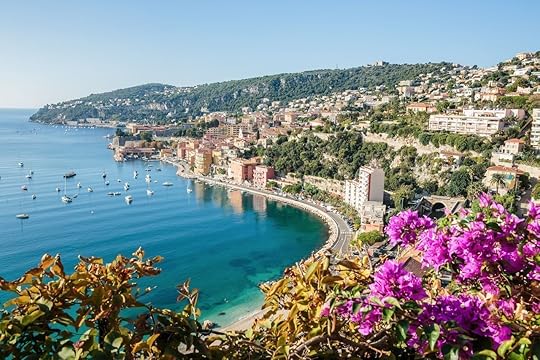
Photo: Laborant/Shutterstock
Nice is France’s top tourist destination after Paris, so it’s worth taking a day to enjoy this vibrant Mediterranean coastal city before taking your complimentary transfer to Arles. Nice was under Italian rule until 1860, and you can see French and Italian traditions intermingle in the architecture, boutiques, and authentic “Cuisine Nissarde” restaurants. Restaurants that use the ingredients and recipes of the region’s imitable cuisine receive Cuisine Nissarde certifications that they proudly display in their windows. Once such establishment, A Buteghinna in the heart of Vieux Nice (Old Nice) uses only seasonal ingredients from small, local producers to make dishes like summertime stuffed zucchini blossoms or a baked cod with aioli.
At Cours Saleya, one of the country’s most renowned markets, you’ll find fresh flowers, spices and soaps, olives, Corsican cheese, and sausage and lavender products from Provence. You might want to sample traditional crepe-like socca, a dish that’s Italian in origin and made with chickpea flour, olive oil, salt, and water; it’s grilled streetside and served piping hot.
After the market, you can stroll Nice’s famed Promenade des Anglais, a lovely boulevard running alongside the seriously blue Mediterranean. Climb the steep steps up historic Castle Hill for bird’s-eye views of the coast. If you have time for even one of the city’s 19 museums and art galleries, the highest concentration after Paris, you’ll barely have scratched the surface of this remarkable city.
Stand where van Gogh painted, seeing what he saw
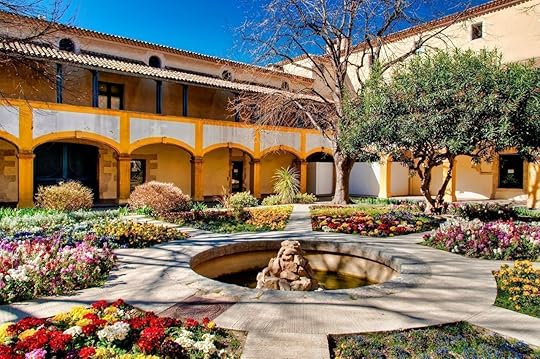
Photo: Jorge Alves/Shutterstock
You’ll get in the ship at Arles, a city best known for its renowned former resident, artist Vincent van Gogh, who left Paris and painted prolifically from 1888 to 1889 while living here. After a fight that severed his friendship with fellow-artist Paul Gauguin, van Gogh infamously cut off his own ear and delivered it to a prostitute. Reproductions of van Gogh’s paintings are displayed at the approximate spots where he set up his easel, including well-recognized “Starry Night over the Rhone,” painted from the river embankment, and “Garden of the Hospital in Arles” where van Gogh checked in after the ear incident.
Beyond van Gogh, Arles is famed for its well-preserved Roman ruins, as it was one of the Roman Empire’s early conquests in 125 BC. Among the ancient relics are a coliseum with some 60 arches that originally held 26,000 spectators, although the third-tier seating didn’t survive the elements. From April to mid-October, the arena still hosts bullfights that began during the Roman era.
In Avignon, see France’s turn as the seat of the pope

Photo: FenlioQ/Shutterstock
For nearly 75 years during the 14th century, Avignon — with its legendary half-bridge, Pont d’Avignon– belonged to the popes, not the French. Evidenced by the sprawling UNESCO World Heritage Palais des Papes, a stunning Gothic structure that was added on to by each successive pope. For another 39 years, competing popes lived in both Avignon and Rome, although Rome eventually held onto the papacy. You can visit the Palais de Papes on your own with an iPad audio tour that’s included in the price of entry or take part in a guided tour. Back in the 14th century, water was not very clean, so popes drank several liters of wine daily — although it was more like cider. Nonetheless, the region became known for its wines during the papal period, and its wines have only improved since then.
After the Romans conquered the northern Côtes du Rhône region, they began planting vineyards. An on-board tasting led by L’Hermitage Vineyards showcases their full-bodied reds before passengers disembark to hike through the vineyard. Côtes du Rhône claims to be the birthplace of Syrah wine.
Backed into the granite hills, and on opposite sides of the Rhône River, the towns of Tournon and Tain L’Hermitage are connected by a pedestrian suspension bridge, one of the few that survived WWII. Past the bridge and above the town, terraces stairstep the hillside. A knowledgeable guide will lead you along paths paved with river stones, where monks, weary from the crusades, settled and grew vines around the chapels they built. Today, L’Hermitage Vineyards bottles some of the most famous labels in France, which were the official wines in the courts of King Louis XIII and Louis XIV. Before returning to the ship, you’ll stop at Valrhona’s Cite du Chocolat where the samples are plentiful, and no one leaves without their chocolate fix.
Cycle along the banks of the Rhône
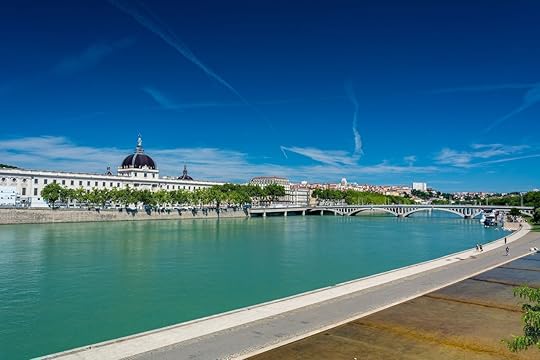
Photo: Pics Factory/Shutterstock
Complimentary bikes on board make it easy to ride through the quaint river towns, such as in Tournon, where a paved path hugs the water from Arles all the way to Geneva. Hiking and canoeing, depending on the destination, might also be on the itinerary.
The bike tour in Lyon, the final stop on the cruise, starts from the ship and takes advantage of the brilliant mile-long Tunnel de la Croix-Rousse. The largest tunnel in Europe dedicated solely to pedestrians and cyclists, it’s illuminated by colored lights, video displays, and music for entertainment. Next, you’ll head to Parc de la Tête d’Or, a sprawling urban park where you can tour the zoo, botanic, and rose gardens, and also take a rowboat onto the lake. As you pedal by the Saône and Rhône Rivers that divide the city, your local guide will point out history and chat about daily life. On the cobblestoned streets of Vieux Lyon (Old Lyon), your guide might stop to lead you through its famous traboules, covered lanes and passageways between the buildings that serve as short-cuts and were used as escape routes by the French Resistance during WWII.
Afterward, spend the afternoon like a local beside the fountain in Place Bellecour while listening to a talented, street performer. Take home a box of bouchons de Lyon, chocolates wrapped to look like wine corks that are unique to this city.
Savor the cuisine these regions are famous for

Photo: Elizabeth Hey
Executive Chef Teo Petre and his brother, who also works for Emerald, won 2018 Best Chefs of the Emerald fleet. Each evening, Chef Teo presents the chef’s entrée and shares his knowledge about the regional wines and cuisine on the menu, such as beef bourguignon, coq au vin, duck, escargot, and French terrines. Poured liberally at dinner, regional red and white labels, alongside German beer, include the famed L’Hermitage reds.
Each sailing, a local celebrity chef comes aboard to share his signature dishes. While in Arles, Fabien Morreale, a finalist of Top Chef France, executed an excellent three-course dinner featuring a crudité salad; beef confit cooked for eight deliciously slow hours and finished in truffle sauce; white fish served with beurre blanc accompanied by carrot puree; and, for dessert, his grandmother’s olive oil cake. Crusty bread, made with flour milled near his Marseille restaurant, and regional wines rounded out the menu.
Unplugging and relaxing aboard the ship
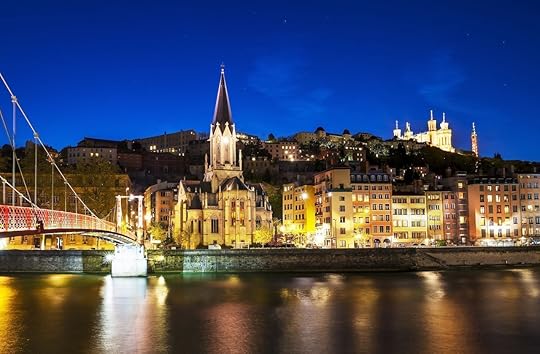
Photo: ventdusud/Shutterstock
The cruise we took travels through numerous locks, primarily in the evenings so as to give you maximum time for exploring during the day. The only time it sails by day is Lyon to the northernmost stop at Salon-Sur-Soâne — although some other Emerald Waterways itineraries do spend more time cruising by day, if that’s what you’re looking for. When you are back on board after an afternoon of exploration, you can spend the pre-dinner hours with a good book, or sipping a cocktail poolside. Or you could even take a dip in the pool before the floor comes up to turn it into a movie theater.
A featured movie, with popcorn, is shown every night on the big screen at the pool deck. But since time aboard the ship is all about chilling out, you could also catch a movie on your room’s TV. Spa treatments range from salon services to massages, and there’s even a small fitness room. In the evenings, this is not a massive ocean cruise with big, bright shows. Nightly entertainment is more focused on the region’s fantastic culinary offerings, with multi-course dinners and excellent wine, and maybe a local musician adding to the atmosphere. You can always sleep in the next day and still have plenty of time to explore. 

More like this: The 10 coolest new small cruise ships coming in 2020
The post A river cruise through Provence, France, has all of the sights with none of the rush appeared first on Matador Network.

White House architectural order

It’s a good thing that one of the responsibilities of the Executive Branch isn’t determining what constitutes “good art” and “bad art.” While all forms of art and architecture are subjective, most would probably agree that the US government isn’t exactly an authority on architectural aesthetics, but that may not stop them from dabbling anyway. According to a preliminary draft order obtained by Architectural Record, the White House may be trying to rewrite the Guiding Principles for Federal Architecture, issued in 1962, to make all new federal buildings adhered to a classical architectural style.
The draft order, reportedly titled “Make Federal Buildings Beautiful Again,” says that for new and upgraded federal buildings, “the classical architectural style shall be the preferred and default style.” This would be an effort to return the country’s federal buildings to the classical models embraced by the founding fathers — a style inspired by democratic Athens and republican Rome. The contemporary style, the order argues, has failed to integrate “our national values into Federal buildings,” which have been “influenced by Brutalism and Deconstructivism.”
The draft specifically calls out the US Federal Building in San Francisco and the US courthouse in Austin and Miami for having “little aesthetic appeal.”

Photo: Kazzland Inc/Shutterstock
The old Guiding Principles in place do say to avoid Brutalist and Deconstructivist styles, but they also state that “design must flow from the architectural profession to the government and not vice versa,” and even that “the Government should be willing to pay some additional cost to avoid excessive uniformity in design of Federal buildings.”
President Trump’s appointments have reflected this desire to reclaim the classical aesthetic. In 2018, he appointed Justin Shubow, the president of the National Civic Art Society, whose mission is to promote classical architecture. The society aims to restore architecture to its pre-modernist roots, with its website stating that, “contemporary architecture is by and large a failure.” Shubow was vocally against the modern design for the Eisenhower Memorial, which thankfully is still moving forward and will open in May.
It remains to be seen whether this draft order ever comes to fruition, but there will doubtless be pushback not only politically but also from the architectural community. The American Institute of Architects already issued a statement: “The AIA strongly opposes uniform style mandates for federal architecture. Architecture should be designed for the specific communities that it serves, reflecting our rich nation’s diverse places, thought, culture, and climates. Architects are committed to honoring our past as well as reflecting our future progress, protecting the freedom of thought and expression that are essential to democracy.”
The Trump Administration has not responded to the story. 

More like this: 7 lesser-known Parisian architectural wonders you can check out for free
The post The White House might soon require all new federal architecture to be ‘classical’ appeared first on Matador Network.

National Trust sites near Manchester

It may be the UK’s third-largest city, but Manchester is more than just hipster bars, glitzy restaurants, and packed shopping streets. Hop on a bus or train, and within half an hour you’ll have reached brooding moorlands, vast country estates, and picturesque villages.
Many of these rural attractions are owned by the National Trust, Europe’s largest conservation charity. Heading into its 125th year, the organization is devoted to protecting some of the UK’s most spectacular historic houses, woodlands, gardens, countryside and stretches of coastline. If you prefer ancient deer parks, centuries-old mansions, and beautifully preserved industrial heritage to cityscapes, head to these seven National Trust properties within easy reach of Manchester.
Should I join the National Trust as a tourist?
The National Trust offers a variety of memberships that include free entry to more than 500 properties across the UK, priced from six British pounds ($7.80) per month for individuals aged over 26. Discounts are available for two adults living at the same address, families, young people (aged 18-25), and juniors (5-17). Under-fives get in free. All memberships are annual, so unless you’re visiting for several weeks over the course of a year, it’s probably best to just pay at the door. Prices vary from location to location but start at around £6 for adults. Alternatively, US residents can join the Royal Oak Foundation — the National Trust’s American affiliate — to receive unlimited free access to all National Trust sites. Prices start at $80 for 12 months.
1. Dunham Massey

Photo: Heidi Becker/Shutterstock
Perched midway between Manchester and the industrial town of Warrington, Dunham Massey is a green oasis housing vast gardens and sprawling woodlands of ancient trees. At the heart of the site is Dunham Massey Hall — an imposing Georgian mansion. During World War I, the property was repurposed as a military hospital; 282 wounded soldiers were treated here between 1917 and early 1919. The house is a major draw in its own right; the red brick facade — a common feature of grand historic buildings in northwest England — is punctuated by window bays and a striking gray stone centerpiece. But the real star of the show is the surrounding greenery. The gardens are home to more than 700 plant species while the 300-acre parkland is occupied by Dunham Massey’s resident herd of fallow deer. The 18th-century stable block has been transformed into a restaurant that serves a variety of local seasonal specialties — think warming stews, casseroles, and jacket potatoes.
The property is best reached by road. Buses from Altrincham (in Greater Manchester) to Warrington stop outside the gates. Alternatively, drivers can reach Dunham Massey in around 45 minutes from central Manchester. Different entrance fees apply for different parts of the property, with prices starting at £11 ($14.30) for adults and £5.50 ($7.15) for children.
Where: Dunham Massey, Altrincham, Greater Manchester, WA14 4SJ
2. Quarry Bank
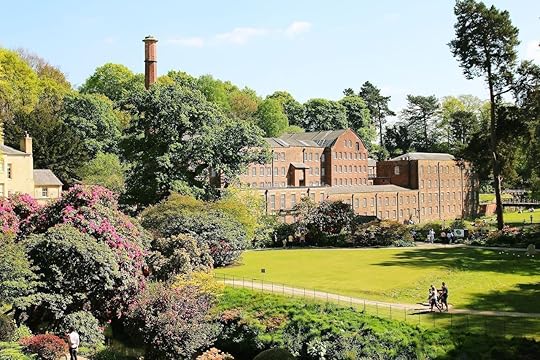
Photo: Alastair Wallace/Shutterstock
Quarry Bank, one of Britain’s best-preserved industrial heritage sites, is just a stone’s throw from the noise and traffic of Manchester Airport. Visiting this historic space is like stepping back in time to the Industrial Revolution. Looming out of the surrounding woodland is a beautifully preserved cotton mill, once driven by the waters of the River Bollin and the labor of a small army of workers. Some of the machinery still functions to this day — hearing the deafening clatter and floor-shaking power of the looms and spinning machines provides a stark insight into the terrifying conditions of the 18th- and 19th-century industrial workforce.
But Quarry Bank offers much more than a snapshot of Britain’s industrial past. Close to the mill lies Quarry Bank House, once home to the family of Samuel Greg, the factory’s founder. It is bordered by picturesque sloping gardens that provide impressive views over the wooded valley floor. The restaurant, located in the original weaving shed, offers a range of light bites and hot meals, many made with ingredients grown in the onsite garden.
Quarry Bank is easily reached by train from Manchester; services to nearby Styal station leave Manchester Piccadilly roughly every half-hour. Admission to the property costs £20.25 for adults ($26.50) and £10 ($13) for children.
Where: Quarry Bank, Styal Rd, Styal, Wilmslow SK9 4LA
3. Lyme Park

Photo: Debu55y/Shutterstock
Lyme Park, on the edge of Peak District National Park, is comprised of a lavish country house and expansive estate. Once home to the wealthy Legh family, the property is set within 1,300 acres of land, dotted with herbaceous borders and wild, rolling moors. The house — the largest in all of Cheshire — is vast and imposing, built from gray sandstone and Welsh slate. Perhaps the most impressive view of the property can be enjoyed from the south of the building; its giant columns and triangular pediment are reflected in the pond below. The interiors are lavishly decorated — all dark wood paneling, wide-open fireplaces, and ornate gilded chandeliers. In the basement sits the Ale Cellar restaurant, which, as the name suggests, was once the spot where the Lyme family’s ales were left to mature.
Lyme Park is easily accessed by rail, with regular trains running from Manchester Piccadilly to Disley station, just half a mile from the property’s main entrance. A choice of entrance tickets is available, offering access to either the gardens or house, or to both. Prices for the house and gardens combined cost £14.50 ($18.90) for adults, £7.25 ($9.50) for children and £36.25 ($47) for families.
Where: Lyme Park, Lyme, Disley, Stockport, Cheshire, SK12 2NR
4. Little Moreton Hall

Photo: Nigel Jarvis/Shutterstock
Little Moreton Hall has to be seen to be believed. Dating back to the early 16th century, the Tudor manor house looks like it was erected upside down. Each of its two upper stories is wider and taller than the one beneath, giving the impression of a building poised to topple over at any moment; that it remains standing is testament to the artisans who built the property over the course of 100 years. Adding to the house’s fantastical feel, it is located on an artificial island surrounded by a 33-foot-wide moat, thought to have been dug as much as 300 years before the construction of the present-day building.
To the rear of the property is a beautifully manicured garden in which herbs and vegetables, once used for cooking and medicine, still grow to this day. Produce from the garden is used at the onsite cafes, Mrs. Dale’s Tea Room and The Little Tea Room. Given its somewhat remote location, Little Moreton Hall is best reached by car; the drive takes around an hour from Manchester city center. Standard tickets cost £12 ($15.60) for adults, £6 ($7.80) for children, and £30 ($39) for families.
Where: Little Moreton Hall, Congleton, Cheshire, CW12 4SD
5. Tatton Park

Photo: Debu55y/Shutterstock
Home to a branch of the aristocratic Egerton family for almost 400 years, Tatton Park has a suitably opulent mansion set in 50 acres of landscaped gardens and bounded by 1,000 acres of deer park. The house is situated on an elevated spot that affords views of the lower-lying parkland while its striking southern frontage — replete with four towering columns and a triangular portico — dominates the center of the estate. Within the mansion’s walls are ostentatiously decorated rooms, including a library with more than 8,000 books — one of the National Trust’s most important literary collections. Visitors can also head “below stairs” to explore the kitchen, salting room, scullery, and wine cellar, which were once the domain of the Egerton family’s many servants. The property’s former stableyard has been converted into a shopping and dining hub with a restaurant, tea room, and three shops selling a wide range of local produce.
Tatton Park is two miles from the nearest train station and bus stop (both in Knutsford), so it’s best reached by car. The drive takes around half an hour from central Manchester. A variety of ticketing offers are available, allowing access to different parts of the site. Alternatively, passes for the whole property cost £13 ($17) for adults, £7 ($9.10) for children aged 4-15, and £33 ($43) for a family of two adults and up to three children.
Where: Tatton Park, Knutsford, Cheshire, WA16 6QN
6. Gawthorpe Hall

Photo: Debu55y/Shutterstock
During the Industrial Revolution, Burnley was one of England’s most important mill towns and a major global center of engineering. It’s still home to former manufacturing buildings and rows of terraced properties built to house mill workers. Yet on the town’s outskirts lies the beautiful Elizabethan country house of Gawthorpe Hall. With its striking central tower, formal gardens, and wild woodlands, it feels a world away from Lancashire’s industrial heartland. While it dates back to the 1600s, the mansion was extensively renovated during the 19th century by Sir Charles Barry, designer of the Houses of Parliament and Highclere Castle — better known as the setting of TV period drama Downton Abbey. Its hall has the largest collection of paintings on loan from the National Portrait Gallery to be found anywhere in northwest England.
Given its proximity to Burnley, Gawthorpe Hall is easily reached by public transport. Trains run from Manchester Victoria to Burnley Manchester Road — a journey of around 45 minutes — while frequent buses operate between Manchester Chorlton Street and Burnley bus station. Admission costs £6 ($7.80) for adults and £4 ($5.20) for concessions.
Where: Gawthorpe Hall, Burnley Road, Padiham, near Burnley, Lancashire, BB12 8UA
7. Hardcastle Crags
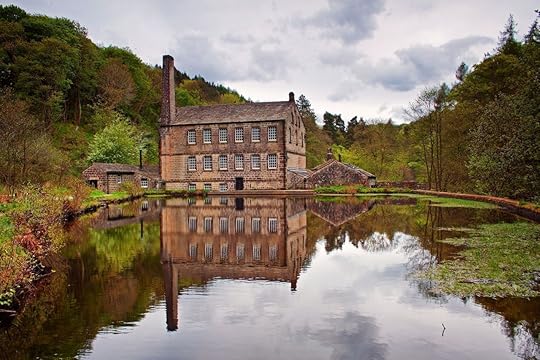
Photo: DMC Photogallery/Shutterstock
Up in the Pennines, the range of hills and mountains that separate northwestern England from Yorkshire, stands Hardcastle Crags. This 400-acre spot is crisscrossed by 15 miles of footpaths that weave between its babbling streams, crashing waterfalls, deep ravines, and rugged woodlands. At the center of the valley is Gibson Mill, one of the first mills of the Industrial Revolution. Its slate-gray walls and towering chimney stack cast a spectacular reflection onto the still gray waters of the millpond below. The building has a unique claim to fame, being the only National Trust property not connected to the national electricity grid. As such, it has become the organization’s flagship building for sustainability. Gibson Mill also houses the Weaving Shed Cafe, which serves ethical and locally produced food.
The nearest station to Hardcastle Crags is almost two miles away in Hebden Bridge; the walk takes around 40 minutes, and train services run regularly from Manchester Victoria. Alternatively, the drive from Manchester city center takes about an hour. Hardcastle Crags is free to visit, but there is a charge for car parking.
Where: Hardcastle Crags, Gibson Mill, Midgehole Road, Hebden Bridge, West Yorkshire, HX7 7AW 

More like this: The 3 most unforgettable mountain bike rides in England’s Peak District
The post The most stunning natural and historic sites just outside of Manchester appeared first on Matador Network.

The lowdown on baggage claim

Recently, after arriving on a flight from Houston into LAX, I stood amongst the other passengers waiting to retrieve our belongings at baggage claim. The carousel had just started turning when a woman pushed through the crowd towards the carousel. “Excuse me, first-class passenger here, I need to get up to the carousel,” she proclaimed loudly to everyone within earshot. This caught me by surprise, not so much because of its blunt rudeness but because I realized I’d never given the topic any thought. Do first-class passengers get their bag first at baggage claim? Or are we all subject the same anxious wait for our belongings to drop onto the carousel? A research rabbit hole session ensued, revealing that the system of claiming baggage is one of good intentions often overshadowed by simple complications. Here’s the lowdown.
Understanding the system

Photo: Caron Badkin/Shutterstock
On average, it takes eight minutes to move a bag from the airplane to the carousel, according to the New York Times, which analyzed baggage wait times at George Bush Intercontinental Airport in Houston. Flights with a lot of oversized bags, such as ski travelers flying into Denver International Airport, take slightly longer — a quick Google search returned multiple forum threads noting 10-15 minute wait times for ski bags at DIA.
Neither seems obscene, given that the average walk time from plane to baggage carousel comes in at around seven minutes at most major US airports. But for those hoping to book an Uber before everyone else or get to the public transit station before the next train departs, every moment counts. It comes down to how fast bags are unloaded, moved across the tarmac, and sent to the backend of baggage claim. This is a straightforward process but depends on simple factors such as how many bags there are, how big the airport is, and whether or not a carousel is immediately available. No matter how much you paid for your ticket, there’s no getting around the human factor.
The early bird gets the bag
All data I found points to one overarching takeaway: If you want to be among the first to walk away from the baggage carousel, you’d better get to the airport early. This is especially true if you aren’t first or business class, as you’ll want to get your bag into the airline’s hands before the other economy passengers do so. A customer service rep with United told me over the phone that the process essentially comes down to a first-on, first-off system. “If you’re one of the first passengers to check-in and board the plane, you should be one of the first to see your baggage at the carousel,” she said. The bags that get to the plane first are loaded first and should also the first ones to hit the carousel at the arrival airport.
When asked specifically if that refers to first-class passengers, she said no.
A Delta rep got more specific, saying, “Most of the time, yes, the first-class passengers should get their bag first because they are loaded first onto the plane.” She was hesitant to confirm that this was always the case, however. If you aren’t flying first or business class, there is further evidence for our early-bird-gets-the-bag theory, given both United and Delta’s grouped boarding systems that divide passengers into separate groups that each board together. First-class passengers are almost always among the first ones on the plane, followed by the airlines’ rewards members and those who arrived at the baggage check-in the earliest. If you happen to be in one of those three categories, you’re looking good for a quick baggage retrieval on the back end.
So, how quickly can I expect to see my bag?
Generally speaking, the first-on, first-off system is set up to benefit first-class passengers and those who arrive early to the airport to check in their bags, though there are exceptions. The most common of these is a passenger taking more than one flight to their final destination. You may have arrived at the airport three hours before your first flight and been the first on that flight to send your bag away with the airline. But your layover is likely to throw that early arrival to the wind. True, your bag should be among the first off that first flight, but there’s no guarantee that it will be at the front of the pile when it gets loaded onto the next flight. This is especially true if you’re swapping airlines during international travel, as even partner airlines may have different policies or ways of organizing luggage. The more flights you take, the more likely your luggage is to be blended into the general mix of bags bound for a specific plane or city.
First- and business-class passengers should, at least, be able to assume they won’t be the last passengers retrieving their bag. But you know what they say about making assumptions. Your best bet is to plan on the average wait time and budget in a few extra minutes as a cushion. No matter how well organized the system is, in the end, whether or not first-class passengers can expect their luggage before everyone else is a game largely decided by chance, not a right. So don’t be an entitled jerk about it. 

More like this: Sign up for these programs to make travel much easier in 2020
The post Do first-class passengers actually get their bags first at baggage claim? appeared first on Matador Network.

Art exhibit in Saudi Arabia desert

Saudi Arabia isn’t exactly known as a hub of contemporary art and culture, but from January 31 until March 7, 2020, it will be the host of one of the coolest art installations in the world.
The 2020 Desert X exhibition, previously hosted in the desert of Coachella Valley, California, in 2017 and 2019, is comprised of 14 art installations, ranging from artificial puddles that double as trampolines to a three-seater swing, in the AlUla desert, an ancient oasis.
The works are all designed to spark conversation about the desert and the history of the area, which mostly remains unknown to the rest of the world.

Photo: Abdulrazack/Shutterstock
The exhibition includes works by Saudi Arabian artist Nasser Al Salem, American artist Lita Albuquerque, Copenhagen studio Superflex, French-Tunisian artist eL Seed, and more. eL Seed’s installation — a pile of mixed Arabic letters taken from a poem and entitled “Mirage” — was inspired by the ancient trade routes that used to run through the desert. It is striking, yet blends beautifully with its surroundings.

Photo: Desert X AlUla
Artist Rashed Al Shashai erected a pyramidal structure entirely from plastic pallets called “A Concise Passage.” Its purpose is to cast the AlUla desert as a historic place for the exchange of goods.
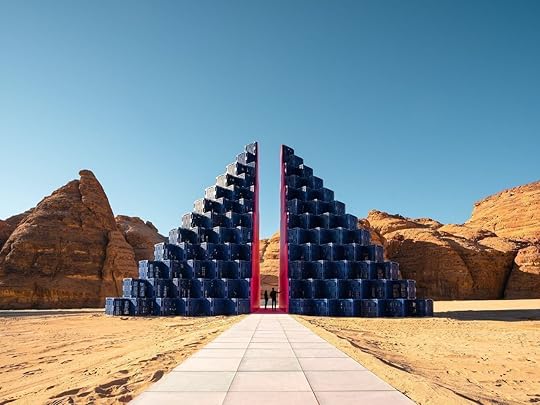
Photo: Desert X AlUla
Manal Aldowayan’s piece, “Now you see me, now you don’t,” are trampoline puddles that also light up at night. Puddles in the desert are incongruous, while they are so common in other parts of the world that they tend to be ignored. Aldowayan’s work aims to highlight water scarcity in the amid climate change, and there’s no better place to do so than in the desert.

Photo: Desert X AlUla
In an attempt to make us look more closely at what seems unimportant, Mohammed Ahmed Ibrahim has worked on 320 stones of different sizes and color inspired by the rocks that fall naturally off the cliffs in the desert.

Photo: Desert X AlUla
Tickets to see the exhibition are free and open every day but Sunday. Despite the new, relaxed visa systems implemented, traveling to Saudi Arabia remains difficult. If you can’t catch the Desert X exhibition in Al Ula, plan to check out the next iteration of the even, which will take place in California in between February 6 and April 11, 2021. 

More like this: How to get a Saudi visa and what to do once you get there
The post This Saudi Arabian desert has been transformed into the coolest outdoor museum appeared first on Matador Network.

How tourists can give back in Mumbai

Two social impact travel organizations have joined forces to offer walking tours in Mumbai, India, focused on the role of development of arts, culture, and fashion in India. The tours, named “Conscious Fashion in Colaba” and “The Role of Development on Arts & Culture in Bandra,” provide a glimpse into India’s sustainable and resourceful epoch while helping the city develop options for responsible tourism. The tours are two great examples of how India is developing one of the most dynamic social entrepreneurship environments in the world — and they’re inviting guests to the city to come and see it for themselves.
The impact of tourism and fashion on Mumbai’s population

Photo: Pete Burana/Shutterstock
Only 22 percent of women are employed in the local workforce, according to Hara World, which leads the two tours, and even they earn significantly less than men for similar work. Workplace conditions are made even worse by the rise of fast fashion: All of the countries, India among them, producing inexpensive, poorly made goods to meet consumer demand face waste issues and unethical business practices. These tours, however, give visitors an inside look at organizations pushing back against fast fashion and the social and economic problems it has propagated throughout India in particular.
Hara World is on a mission to highlight women artisans engaged in work that supports their wellbeing and that of their communities. India has become a growing hub for tech innovation and is recognized globally for its development talent and initiatives, but the organization feels that it’s time visitors see a different side of Indian culture — one that values handmade, sustainable clothing, and artwork.
Providing visitors to Mumbai a way to give back
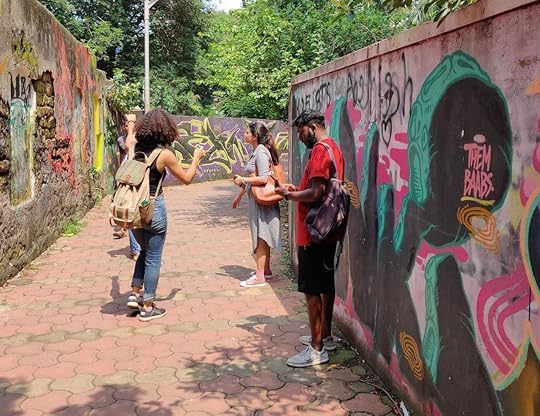
Photo: Bianca Caruana
Responsible tourism is one way to engage visitors in the shift back to a sustainable India. In January, Outlook Responsible Tourism held its fourth annual Indian Responsible Tourism Awards in partnership with the World Travel Market (WTM) and India’s Ministry of Tourism, Incredible India. Among the biggest takeaways was that in recent years, the country has developed a growing market for impactful tourism as visitors wish to give back to places they visit. The result has been the birth of two local day tours that cater to these visitors, using the money collected to employ and support local women in need.
Hara World and TribesforGOOD, two social enterprises using tourism as a force for good in India, are behind the collaboration. Hara World founder Jazzmine Raine describes the tours as “a way to provide participants with resources and tools to make a change and help create the future of India.” Visitors can choose from two different tour options (or do them both on separate days). “Conscious Fashion in Colaba” explores how clothing is made and the lives of the people who make it. The second, “The Role of Development on Arts & Culture in Bandra,” looks at societal shifts in arts and culture as the country has continued to modernize.
These Mumbai walking tours are built on the model of educating and engaging visitors in both the social and environmental issues facing India, and the solutions to eradicate them. “Conscious Fashion in Colaba” invites guests to visit sustainable fashion stores and projects and learn about brands taking a stance against the adverse implications of fast fashion. One such project visited on the tour is I was a Sari, a social enterprise that takes an eco-ethical approach to fashion by creating handcrafted designs from pre-loved saris and engaging women from underprivileged communities as the artisans of their designs.
An hour’s journey north, in the coastal suburb of Bandra, another tour takes place, called “The Role of Development on Arts & Culture.” This tour explores how communities use arts and culture in the fight for social and environmental justice in India. A visit to D-ERT, “The Earth Shop,” offers insights into zero-waste and composting solutions for the home. The tour also walks through the 17th-century Ranwar Village and observes how modern artists are keeping traditional art alive through diverse mediums. It then visits the distinguished textile store Anokhi to look at the journey of clothing from seed to design.
The tours were born out of a desire to connect travelers who want to give back but don’t know how to go about doing so, with an opportunity to do just that. Since launching in November the tours have attracted an eco-conscious audience interested in seeing a different side to one of India’s largest cities. On a recent tour, a participant named Anias said, “I highly recommend this tour for everybody interested in shopping responsibly, or wishing to get to know South Mumbai from a different perspective.”
Reserving space on a tour

Photo: Hara World
Tours run in the Colaba and Bandra neighborhoods from 10:30 AM to 1:00 PM on Fridays, Saturdays, Sundays, and cost 2000 Indian rupees (about $30) per person. Both can be booked online through Hara World. What makes the tours especially valuable to the community is that they support and employ local women who are often overlooked in the traditional workplace.
Should you find yourself especially captivated by either, Hara World also offers an immersive seven-day educational impact course that dives deep into ways that you as a volunteer in Mumbai can support local women in the workplace, contribute to efforts fighting urban poverty, and work alongside local NGOs and government programs doing the same. 

More like this: Support Athens’ marginalized communities on this remarkable walking tour
The post Support women artisans in Mumbai on these incredible eco-fashion walking tours appeared first on Matador Network.

Matador Network's Blog
- Matador Network's profile
- 6 followers



